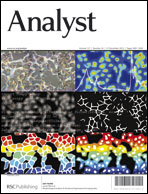A light addressable potentiometric sensor (LAPS) is a kind of silicon based semiconductor sensor, and surface modification is a fundamental problem for its application in biological fields. Graphene oxide (GO) based biochemically activated LAPS were proposed, called GO-LAPS. The GO-LAPS were applied to monitoring single strand DNA (ssDNA) probe immobilization and its hybridization with complementary ssDNA molecules of different chain lengths (30, 21 and 14 base pairs, respectively). It was discovered that the curves of LAPS' currents versus analyte concentrations for ssDNA probe binding and the target ssDNA hybridization were different. Explanations were proposed based on the semiconductor's surface-electric-field-effect and the electrical properties of ssDNA molecule. Moreover, comparisons between GO-LAPS and LAPS without GO modification were carried out. Enhanced response currents of GO-LAPS were reported experimentally and analyzed theoretically based on X-ray photoelectron spectroscopy (XPS) of GO-LAPS. The limitation of target ssDNA monitoring was 1 pM to 10 nM, which suggested that this LAPS based platform could be developed as a sensitive means for short chain ssDNA detection.

You have access to this article
 Please wait while we load your content...
Something went wrong. Try again?
Please wait while we load your content...
Something went wrong. Try again?


 Please wait while we load your content...
Please wait while we load your content...